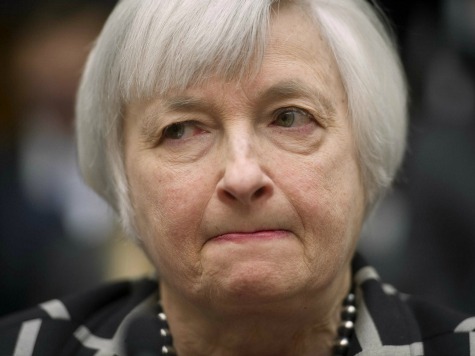Media coverage of Federal Reserve Chairman Janet Yellen’s speech ignores the continuing predicament of the middle income American.
Sure, those with highly leveraged portfolios or a large pile of retirement assets might care, but that’s not the median income worker. For conversation sake let’s call her Julia. Julia is far more concerned with whether her earnings will ever catch up to those in 2007.
The massive Fed interventions and record low interest rates over the last 6 years haven’t helped her. The government recently reported that the 2013 median income of Americans had plummeted 8 percent from 2007. Over half of that happened while the Federal Reserve trumpeted its various “Quantitative Easing” programs.
Instead of wasting so much time bantering about the Fed’s latest pronouncement, political leaders and the media should be focused on how to make workers able to thrive again.
The often conflicting interpretations of the Fed’s positions points out one problem – the primary product of the current monetary system is more and more uncertainty. The Federal Reserve has adopted what is called in foreign diplomacy “the art of ambiguity,” parsing every word and nuance in each sentence.
An economy that rises and falls on statements from bureaucrats is not a healthy one. It doesn’t have to be that way. Eliminate uncertainty by returning to the gold standard and return to the equitable prosperity that made America great.
In contrast over the five years before the dollar was formally cut loose from gold in August 1971, the real earnings of the average American worker grew by 6.3%. Compared to the 8% drop Julia has experienced the last five years, that’s a difference of 14.3% in her buying power.
With the dollar fixed to gold, people did not wake up every morning and listen for how much their paycheck had shrunk in its buying power. Family budgeting was so much easier!
It’s time for a useful discussion. Let American workers flourish.
Fix the dollar.

COMMENTS
Please let us know if you're having issues with commenting.